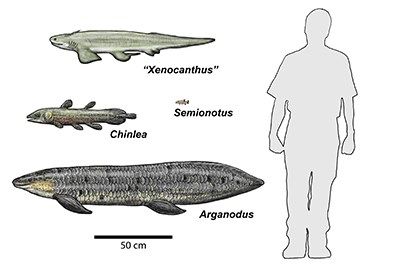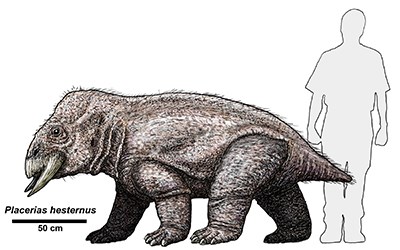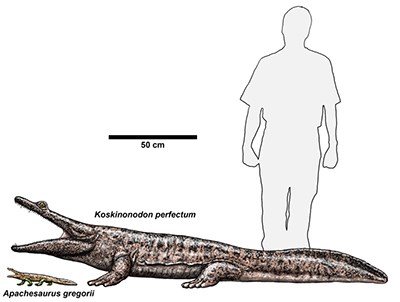|
Petrified Forest was (and is) a complete ecosystem that supported life beyond only the reptile groups. The park is host to abundant invertebrate fossils including freshwater mussels, terrestrial snails, and even older corals and brachiopods

NPS Fish The aquatic vertebrate community was incredibly diverse, including freshwater sharks and a myriad of fishes like coelacanths and lungfish. Xenacanthus is a genus of prehistoric sharks. The first species of the genus lived in the Late Devonian, the genus surviving until the end of the Triassic. Fossils of various species have been found worldwide. The species identified at Petrified Forest National Park is X. moorei. Xenacanthus had a number of features that distinguished it from modern sharks. This freshwater shark was about 3 ft (1 m) in length. The dorsal fin was ribbon-like and ran the entire length of the back and round the tail, where it joined with the anal fin. A distinctive spine projected from the back of the head, and gives the genus its name. The teeth had an unusual V-shape, sometimes called pronged. Most likely Xenacanthus fed on small crustaceans and fish. Like many fossil sharks, Xenacanthus is mainly known because of fossilized teeth and spines. 
NPS 
NPS/Jeff Martz
Fossils of Placerias were found at Petrified Forest before it was a national park by the University of California Museum of Paleontology. 
NPS Metoposaurs Metoposaurs were enormous, flat-headed, carnivorous amphibians. They could be up to six feet in length. Like all amphibians, they needed an abundance of water to live, frequenting the streams and ponds of the Triassic to catch the prey and reproduce. Though they dominated the Early to Middle Triassic rivers, most forms were extinct by the end of the period. Two types are found in Petrified Forest: Koskinonodon and the much smaller Apachesaurus. Interclavicle, clavicle, and skull bones are the most common bones found of Koskinonodon. |
Last updated: April 18, 2016
